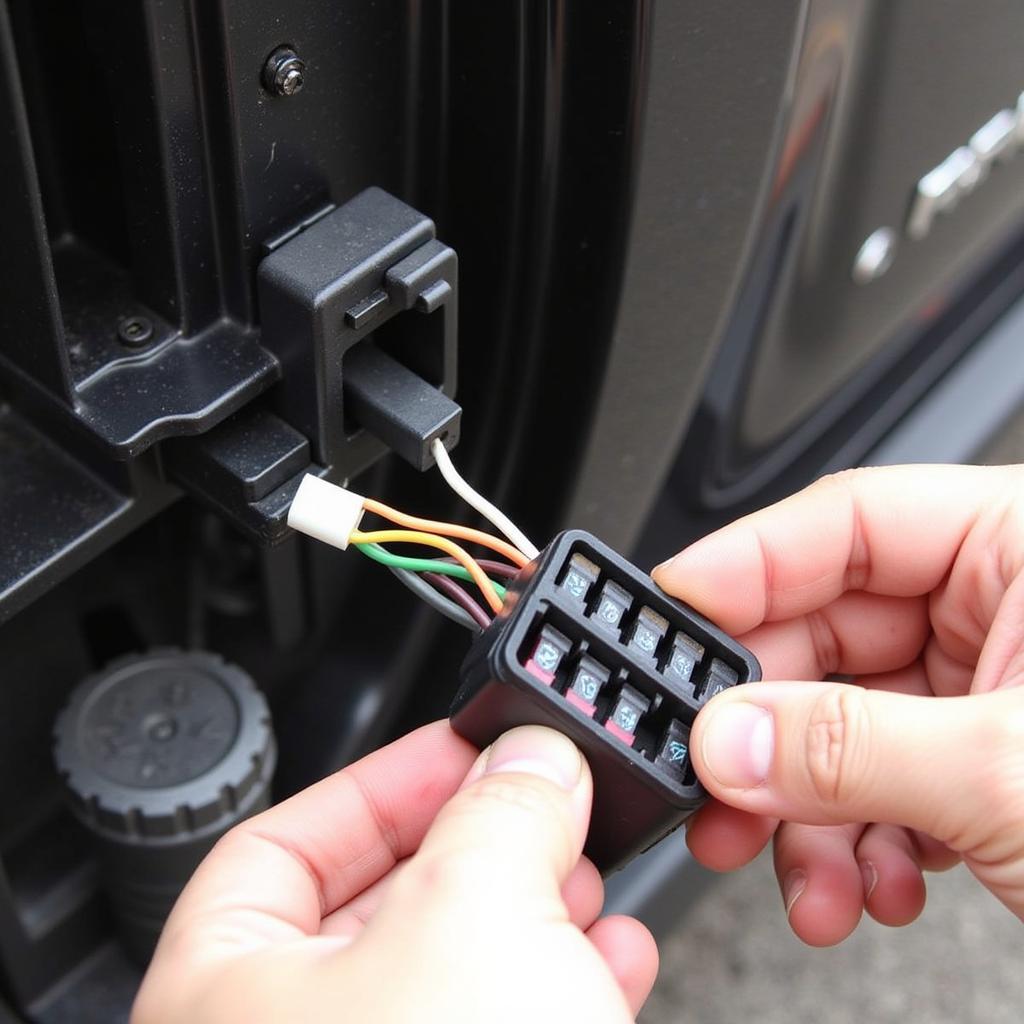The brake warning light on your 2005 Chevy Avalanche dashboard is a crucial safety feature, alerting you to potential issues within your braking system. While it’s designed to illuminate when you engage the parking brake, a persistent glow even after releasing it often signals an underlying problem requiring attention. This comprehensive guide delves into the common culprits behind a stubbornly lit brake warning light on your 2005 Chevy Avalanche and equips you with the knowledge to address them effectively.
Understanding Your Chevy Avalanche’s Brake Warning Light
The brake warning light on your dashboard serves as an early warning system. When it illuminates, it signifies one or more of the following:
- Engaged Parking Brake: This is the most common reason. Ensure your parking brake is fully released.
- Low Brake Fluid Level: Brake fluid is the lifeblood of your braking system. A leak or low fluid level can significantly impact braking performance.
- Worn Brake Pads: Brake pads naturally wear down over time. When they reach a critical point, the brake warning light activates, urging you to replace them.
- Faulty Brake Light Switch: This switch signals your brake lights to activate when you press the brake pedal. A malfunction can disrupt this communication and trigger the warning light.
- ABS Issue: While less common, a problem with your Anti-lock Braking System (ABS) can also illuminate the brake warning light.
Troubleshooting the Brake Warning Light on Your 2005 Chevy Avalanche
Before heading to a mechanic, there are several checks you can perform yourself to potentially diagnose the issue:
-
Check Your Parking Brake: As basic as it sounds, ensure your parking brake is fully disengaged. Even a slightly engaged parking brake can trigger the warning light.
-
Inspect Brake Fluid Level: Locate the brake fluid reservoir under the hood, usually a translucent container with a “Minimum” and “Maximum” marking. If the fluid level is below the minimum, it needs topping up. However, a sudden drop in brake fluid level often indicates a leak, necessitating a professional inspection.
-
Inspect Brake Pads: While visually inspecting brake pads can be tricky, you can attempt to gauge their thickness. If they appear significantly thin or you hear a grinding noise when braking, it’s time for a replacement.
When to Seek Professional Help
While the above checks can help identify straightforward issues, certain situations warrant the expertise of a qualified mechanic:
- Persistent Warning Light: If the brake warning light remains illuminated despite checking and rectifying potential causes, it’s crucial to seek professional diagnosis.
- Visible Brake Fluid Leak: A leak in your brake system is a serious safety hazard and requires immediate attention.
- Spongy or Soft Brake Pedal: This can indicate air in the brake lines, compromising braking efficiency.
- Unusual Noises When Braking: Grinding, squealing, or scraping sounds while braking often point towards severely worn brake components requiring immediate attention.
Re-Setting the Brake Warning Light After Repairs
Once you’ve addressed the underlying issue triggering the brake warning light, it should extinguish automatically. However, in some cases, you might need to manually reset the system. While the exact procedure can vary, here’s a general approach:
-
Disconnect the Battery: For safety, disconnect the negative terminal of your car battery.
-
Locate the OBD-II Port: The OBD-II (On-Board Diagnostics) port is typically located under the dashboard on the driver’s side.
-
Connect an OBD-II Scanner: Connect an OBD-II scanner to the port and turn on the ignition (without starting the engine).
-
Access the Brake System: Navigate to the “Brake System” or “ABS” module using the scanner’s menu.
-
Reset the Warning Light: Select the “Reset” or “Clear Codes” option. This should clear the stored trouble codes and extinguish the warning light.
Expert Insights
“While it might be tempting to ignore a flashing brake warning light, especially if your brakes seem to be working fine, it’s crucial to remember that it’s an early warning system,” says Mark Stevenson, a seasoned automotive electrician with over 20 years of experience. “Ignoring it could lead to more extensive and costly repairs down the line. A quick inspection or a visit to a trusted mechanic can save you from potential headaches and ensure your safety on the road.”
Conclusion
The brake warning light on your 2005 Chevy Avalanche is a crucial safety indicator, and addressing the underlying issue promptly is paramount. By following the troubleshooting steps outlined above and seeking professional assistance when necessary, you can ensure your braking system remains in optimal condition, providing you with peace of mind on the road.

